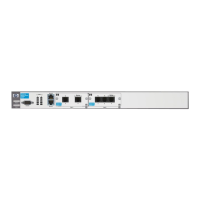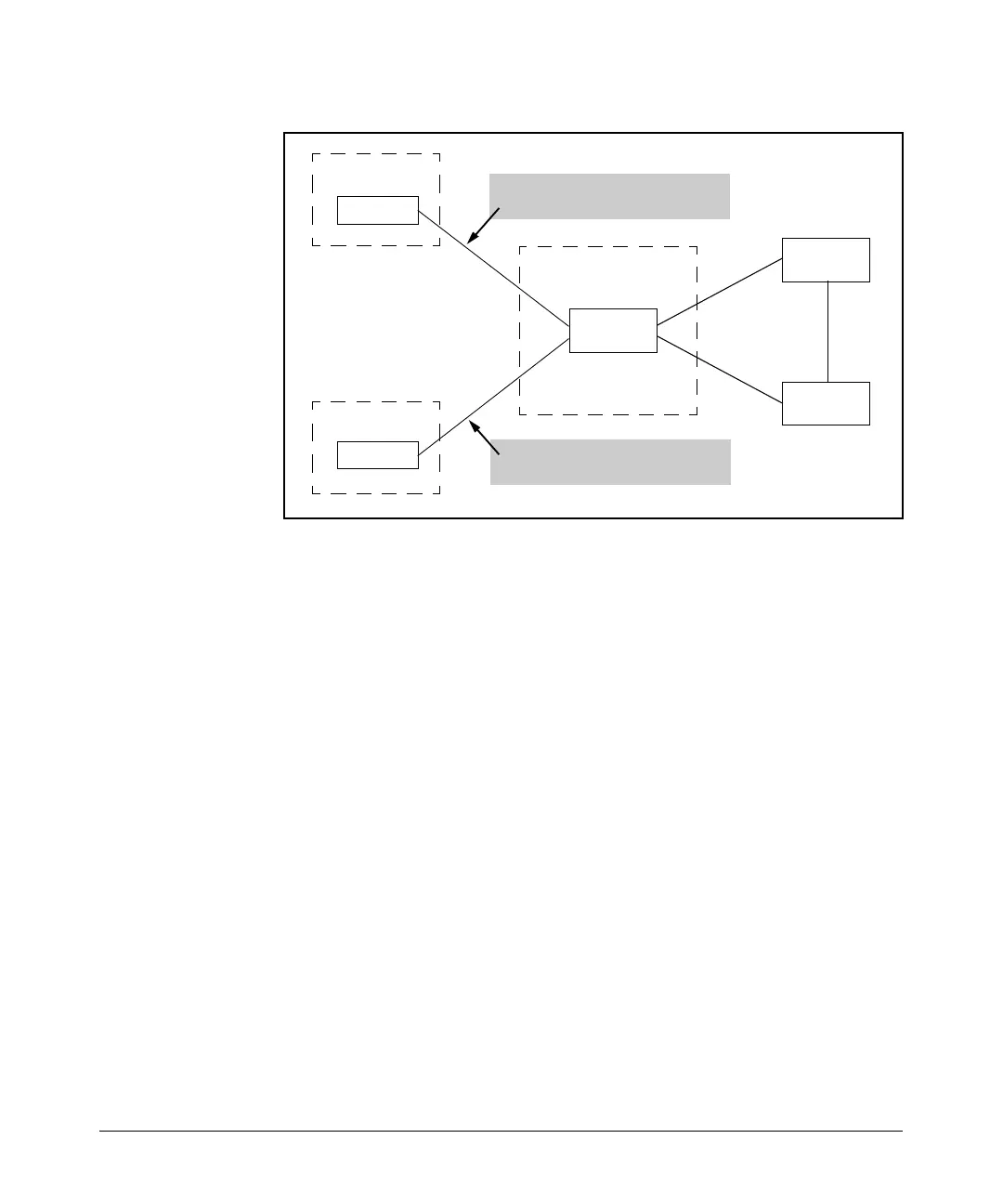6-20
Configuring the Data Link Layer Protocol for E1, T1, and Serial Interfaces
Configuring the Logical Interface
Figure 6-5. A Frame Relay Network Dynamically Allocates Bandwidth.
Packet-Switching Network
Frame Relay transfers data through multiple nodes in a shared network using
packet switching. Frame Relay divides data into frames, and each frame
travels through the network individually, passing from one Frame Relay
switch to another in a non-fixed path, until the frames are reassembled at their
destination.
Although frames can take multiple and variable paths through a shared
network, two routers, which are identified by administratively assigned
circuit IDs, define the fixed endpoints to a permanent virtual circuit (PVC).
In a Frame Relay network, a PVC is a logical connection between two sites.
(See Figure 6-6.)
Router
Frame Relay
switch
Router
Frame Relay
switch
Frame Relay
switch
Subscriber 1
Subscriber 2
Public Carrier’s CO
Frame Relay
over T1
Frame Relay
over T1
Transmitting an average of 768 Kbps
with bursts to 900 Kbps
Transmitting an average of 640 Kbps
with bursts to 832 Kbps

